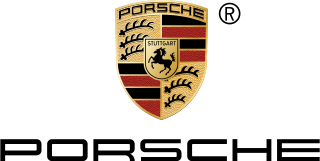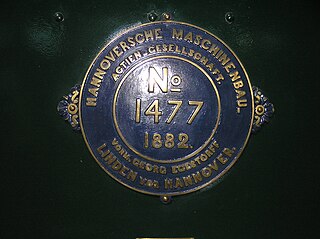
Pilotmotorenwerke Bannewitz (Pilot-Wagen) was a German carmaker that debuted in 1919 with the "Pilot" make. [1] It went out of business in 1931. [2]

Pilotmotorenwerke Bannewitz (Pilot-Wagen) was a German carmaker that debuted in 1919 with the "Pilot" make. [1] It went out of business in 1931. [2]
After World War One the Chemische Fabrik Orloff Hansen, which had previously manufactured munitions, changed to small car manufacturing under the amended company name Pilotmotorenwerke Bannewitz. Walter Wippermann managed the company. Its first car called the Pilot was the 6/22PS. The 1500 cc engine was the first German 16-valve four-cylinder engine in series production. [1] [2]

By 1924 the company had 150 employees and the cars were selling well. At the end of 1924 the rail carriage-maker, Sächsische Waggonfabrik Werdau AG, acquired a majority share holding and manufacture of the vehicle bodies was moved to Werdau. A new type, the 6/30, was introduced at this time and revised to a 6/36 in 1927. In addition to both open and closed cars, a delivery van was also produced for the short time the marque was in existence. [1] [2]
Due to the continuing poor economic conditions in Germany at the time, the auto making firm was put into liquidation by Sächsische Waggonfabrik on 19 May 1928 after failed acquisition negotiations with Elite-Diamantwerke Brand-Erbisdorf AG. Sächsische Waggonfabrik then concentrated on rail production. [3] [1] Parts and repair operations continued under the administrator until 1931 when operations finally ceased. [2]
Three Pilot vehicles are known to be still in existence. Two are privately owned by Autohaus Seifert GmbH in Freital and the third is on display in the Dresden Transport Museum. The Dresen car does not have a standard Pilot body, but one made by Gläser in Dresden. [2]
Bentley Motors Limited is a British designer, manufacturer and marketer of luxury cars and SUVs. Headquartered in Crewe, England, the company was founded by W. O. Bentley (1888–1971) in 1919 in Cricklewood, North London, and became widely known for winning the 24 Hours of Le Mans in 1924, 1927, 1928, 1929 and 1930. Bentley has been a subsidiary of the Volkswagen Group since 1998 and consolidated under VW's premium brand arm Audi since 2022.

DKW was a German car- and motorcycle-marque. DKW was one of the four companies that formed Auto Union in 1932 and thus became an ancestor of the modern-day Audi company.

Dr. Ing. h.c. F. Porsche AG, usually shortened to Porsche, is a German automobile manufacturer specializing in luxury, high-performance sports cars, SUVs and sedans, headquartered in Stuttgart, Baden-Württemberg, Germany. The company is owned by Volkswagen AG, a controlling stake of which is owned by Porsche Automobil Holding SE. Porsche's current lineup includes the 718, 911, Panamera, Macan, Cayenne and Taycan.

Gothaer Waggonfabrik was a German manufacturer of rolling stock established in the late nineteenth century at Gotha. During the two world wars, the company expanded into aircraft building.

Auto Union AG was an amalgamation of four German automobile manufacturers, founded in 1932 and established in 1936 in Chemnitz, Saxony. It is the immediate predecessor of Audi as it is known today.

NSU Motorenwerke AG, or NSU, was a German manufacturer of automobiles, motorcycles and pedal cycles, founded in 1873. Acquired by Volkswagen Group in 1969, VW merged NSU with Auto Union, creating Audi NSU Auto Union AG, ultimately Audi. The name NSU originated as an abbreviation of "Neckarsulm", the city where NSU was located.
Lloyd Motoren Werke G.m.b.H. was a German automobile manufacturer, created in 1908 and owned by the Norddeutscher Lloyd shipping company. The factory was in Bremen. The company operated under a variety of different names throughout the decades, but their products were nearly always badged with the Lloyd marque. Originally a manufacturer of luxury cars, the company was folded into the Borgward Group in 1929, with the brand not used on passenger cars again until 1950. Production ended for good in 1963, although a successor company continued trading until 1989, selling replacement parts, as well as manufacturing engines for snowmobiles and boats.
Hansa-Automobil Gesellschaft m.b.H was a German car brand established in 1905, which in 1914 was merged with Norddeutsche Automobil und Motoren AG (NAMAG) into Hansa-Lloyd-Werke A.G.. From 1929 to 1931 it was taken over by the Borgward group. Hansa was based in the Bremen suburb of Hastedt.

Hanomag was a German producer of steam locomotives, tractors, trucks and military vehicles in Hanover. Hanomag first achieved international fame by delivering numerous steam locomotives to Finland, Romania and Bulgaria before World War I and making of first tractor Hanomag R26 in 1924 in Germany. In 1925, they added automobiles to their line, additionally moving in 1931 into the production of construction machinery. Since 1989, the company has been part of the Komatsu company.
The Automobilwerk Eisenach (AWE) was an automobile manufacturer in Eisenach, Germany.

Düwag or Duewag, formerly Waggonfabrik Uerdingen, was a German manufacturer of rail vehicles. It was sold in 1999 to Siemens with the brand later retired.

Ford-Werke GmbH is a German-based car manufacturing factory headquartered in Merkenich- Cologne, North Rhine-Westphalia. It is a fully owned subsidiary of American Ford Motor Company, which operates two large manufacturing facilities in Germany, a plant in Cologne and a plant in Saarlouis and serves as a major hub for the Automaker's presence in the European markets.

Knorr-Bremse AG is a German manufacturer of braking systems for rail and commercial vehicles that has operated since 1905. Other products in Group's portfolio include intelligent door systems, control components, air conditioning systems for rail vehicles, torsional vibration dampers, and transmission control systems for commercial vehicles.

The Steiger company was founded in 1914 as Maschinenfabrik Walther Steiger & Co. by the Swiss engineer Walther Steiger (1881–1943) in Burgrieden near Ulm, Germany. In 1921 it became a limited company. During its short life the firm produced circa 1,200 vehicles.

Maschinenfabrik Esslingen (ME), was a German engineering firm that manufactured locomotives, tramways, railway wagons, roll-blocks, technical equipment for the railways,, bridges, steel structures, pumps and boilers.

The 'Hanover version' of the Wismar railbus was developed in the early 1930s as a light railbus for economical passenger services on branch lines in Germany.
Waggonfabrik Wismar was a manufacturer of railway vehicles from 1894 to 1947. The company was based in Wismar in the state of Mecklenburg-Western Pomerania in Germany.
The Dresden–Werdau railway is an electrified, double-track main line in the German state of Saxony. It runs from Dresden via Freiberg, Chemnitz and Zwickau to Werdau wye, where it joins the Leipzig-Hof railway.
The Upper Rhine Railway Company, was a railway infrastructure company and transport company based in Mannheim, Germany.

Tharandt station is a station on the Dresden–Werdau railway in the town of Tharandt in the German state of Saxony. Until the electrification of the line in 1966, Tharandt was an important stopover for the attachment of bank engines for operations on the Steil ramp up to Klingenberg-Colmnitz. Today, the station has only significance for the regional traffic. It is the terminus for most, but not all trains of Dresden S-Bahn's line S3.